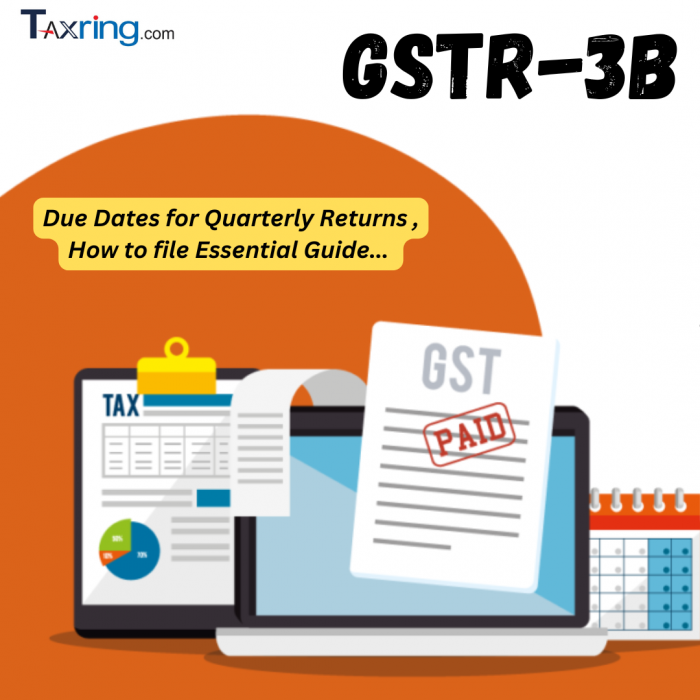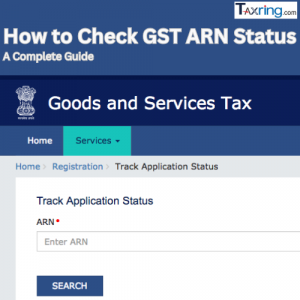
GSTR-3B Due Dates for Quarterly Returns: Ensure Timely Filing in 2024
In the ever-evolving landscape of Goods and Services Tax (GST) compliance in India, GSTR-3B stands as a crucial return that taxpayers must file regularly. This blog provides a detailed overview of GSTR-3B, including its due dates, who needs to file, penalties for late submissions, and comparisons with other GST returns.
What is GSTR-3B? GSTR-3B Due Dates for Quarterly Returns
GSTR-3B is a self-declared summary return that GST-registered taxpayers must file monthly or quarterly (for those under the QRMP scheme). This return provides a consolidated report of sales, Input Tax Credit (ITC) claims, and the net tax liability for the period. It is essential for ensuring compliance and accurate reporting under GST.
Key Features of GSTR-3B:
- Summary Nature: It includes summary figures instead of detailed transaction data.
- Monthly Filing: Taxpayers generally file GSTR-3B every month, but quarterly filers under the QRMP scheme submit it every three months.
- Non-revisable: Once filed, GSTR-3B cannot be revised, making accuracy essential.
Quarterly GSTR-3B Due Date GSTR-3B Due Dates for Quarterly Returns
For taxpayers opting for the QRMP scheme, the due date for filing GSTR-3B is either the 22nd or 24th of the month following the end of the quarter, depending on the state or Union Territory of the principal place of business. For example, for the quarter ending September, the due date would be either 22nd or 24th October, based on your location.
For taxpayers opting for the Quarterly Return Monthly Payment (QRMP) scheme, the due dates for filing GSTR-3B are as follows:
- For the first quarter (January to March):
- 22nd April for taxpayers in certain states (for others, it’s 24th April).
- For the second quarter (April to June):
- 22nd July for certain states (for others, it’s 24th July).
- For the third quarter (July to September):
- 22nd October for certain states (for others, it’s 24th October).
- For the fourth quarter (October to December):
- 22nd January for certain states (for others, it’s 24th January).
Always check the GST portal or consult with Taxring tax advisor for the most current dates and any updates specific to your state.
Who Should File GSTR-3B?
All taxpayers registered under GST are required to file GSTR-3B, including:
- Regular taxpayers
- Taxpayers under the QRMP scheme
Exemptions: The following categories do not need to file GSTR-3B:
- Taxpayers registered under the Composition Scheme
- Input service distributors
- Non-resident suppliers of OIDAR services
- Non-resident taxable persons
Late Fee & Penalty for GSTR-3B
Filing GSTR-3B after the due date incurs late fees and penalties. Here’s how it works:
- Regular Filers: ₹50 per day of delay (₹25 each for CGST and SGST).
- Nil Tax Liability Filers: ₹20 per day of delay (₹10 each for CGST and SGST).
- Interest: If GST dues remain unpaid after the due date, an interest of 18% per annum will be charged on the outstanding tax amount.
Due Dates for GSTR-3B Filing
- Up to December 2019: The due date was the 20th of the subsequent month.
- From January 2020 Onwards: The due dates have been staggered:
- Monthly filers: 20th of every month
- Quarterly filers under the QRMP scheme: 22nd or 24th of the month following the quarter.
Important Note:
Taxpayers must ensure timely payment of taxes and filing of GSTR-3B to avoid penalties.
GSTR-3B vs GSTR-2A & GSTR-2B: Comparison
GSTR-2A:
- Real-Time Updates: GSTR-2A is a dynamic statement reflecting all ITC available based on suppliers’ GSTR-1 filings.
- No Filing Required: GSTR-2A is auto-generated and does not require filing.
GSTR-2B:
- Monthly Summary: GSTR-2B is a static summary statement of available ITC for a particular month.
- Used for Reconciliation: Taxpayers should reconcile GSTR-2B with GSTR-3B to ensure accurate ITC claims.
Importance of Reconciliation:
Reconciliation helps avoid notices due to excess ITC claims, ensures compliance, and improves the GST compliance rating.
Difference Between GSTR-1 and GSTR-3B
- GSTR-1:
- Detail Requirement: Requires detailed reporting of all sales transactions.
- Monthly or Quarterly Filing: Depending on the taxpayer’s category.
- GSTR-3B:
- Summary Nature: Requires only summarized figures of sales and ITC claims.
- Mandatory Filing: Must be filed by all GST-registered taxpayers.
How to File GSTR-3B on Taxring
Filing GSTR-3B on Taxring is a straightforward process that ensures compliance and accuracy. Here’s a step-by-step guide:
- Log into Taxring: Access your account using your credentials.
- Navigate to GSTR-3B: Go to the GST filing section and select GSTR-3B.
- Enter Required Details: Fill in the summary of sales, ITC claims, and net tax payable.
- Review Data: Ensure that all information is accurate and reconciled with GSTR-2A and GSTR-2B.
- Submit Filing: Click on the submit button and wait for the acknowledgment of your filed return.
Frequently Asked Questions
1. Do I need to file GSTR-3B if there are no transactions?
Yes, GSTR-3B must be filed even if there are no sales or purchases during the month.
2. What details do I need to provide in GSTR-3B?
Only consolidated figures of sales and ITC claimed are required in GSTR-3B.
3. Can I file GSTR-3B for multiple GSTINs together?
No, each GSTIN requires a separate GSTR-3B filing.
4. What is the difference between GSTR-3 and GSTR-3B?
GSTR-3 was intended to be an auto-populated return based on GSTR-1 and GSTR-2, but it has been put on hold, while GSTR-3B is a self-declared summary return.
Conclusion
GSTR-3B is a vital component of GST compliance, ensuring that taxpayers report their sales, ITC claims, and tax liabilities accurately. By understanding the due dates, filing processes, and key differences with other GST returns, businesses can maintain compliance and avoid penalties. Leverage tools like Taxring for a seamless filing experience and stay updated with the latest GST regulations to streamline your compliance process!
Related article: What is GST Return ? how to file and how to check gst return filing status? ,




